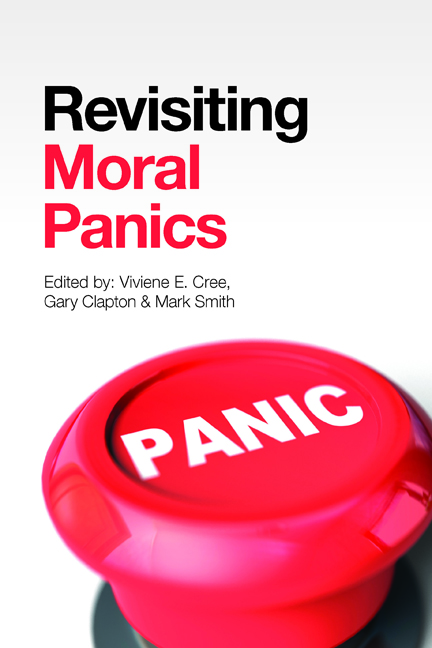Book contents
- Frontmatter
- Contents
- Contributors
- Preface
- Commentary moral panics yesterday, today and tomorrow
- Part One Gender and the family
- Part Two Moral panics in our time? Childhood and youth
- Part Three The state, government and citizens
- Part Four Moral crusades, moral regulation and morality
- Afterword the moral in moral panics
- Conclusion Moral panics and beyond
- Index
Nine - Internet risk research and child sexual abuse: a misdirected moral panic?
Published online by Cambridge University Press: 08 March 2022
- Frontmatter
- Contents
- Contributors
- Preface
- Commentary moral panics yesterday, today and tomorrow
- Part One Gender and the family
- Part Two Moral panics in our time? Childhood and youth
- Part Three The state, government and citizens
- Part Four Moral crusades, moral regulation and morality
- Afterword the moral in moral panics
- Conclusion Moral panics and beyond
- Index
Summary
The collision of recent technological change and fears about sexual risk to children has seemed to polarise debates about online activity by young people and those thought to have a sexual interest in children. Finkelhor (2014) describes the alarmism reflected by scholarly and journalistic literature, which is founded on assumptions about the amplification of deviance, the role and dynamics of the digital environment, and remedies to the problems lying in specialised internet education programmes. He also points out that research findings do not appear to support these assumptions. In many countries, particularly the United States, the rates of child sexual abuse show a decline (Laaksonen et al, 2011; Radford et al, 2011; Finkelhor and Jones, 2012), and only a small proportion of sexual offences against children in the US have an online component (Wolak, Finkelhor and Mitchell, 2009). Bullying, as a form of peer-related aggression, still shows higher rates in faceto- face as opposed to online activity (Livingstone et al, 2011). The US research would also indicate that most online offenders are people who know their victims from offline contexts, and the dynamics of online and offline offenders are similar (Wolak and Finkelhor, 2013), although in the latter analysis the sample reflected two groups that used online communication for sexual communication with a minor. One group was known to the young person in the offline world (family or acquaintances) and the other had first met the young person online, although both used the internet or mobile phone to engage sexually with a minor. In his paper, which was written as a response to Livingstone and Smith (2014), Finkelhor lists many of the positive ways in which technology has facilitated the social development of children, has potentially kept them safe and has provided a buffer to possible harmful risk taking and suggests that it may warrant further exploration ‘once the scholarly imagination moves beyond the technopanic mind set’ (Finkelhor, 2014, p 656).
Others have also reminded us that problems such as bullying are serious, and in some cases can lead to suicide, but that this is a serious social problem rather than a technical one (Berg and Breheny, 2014).
- Type
- Chapter
- Information
- Revisiting Moral Panics , pp. 103 - 112Publisher: Bristol University PressPrint publication year: 2015



